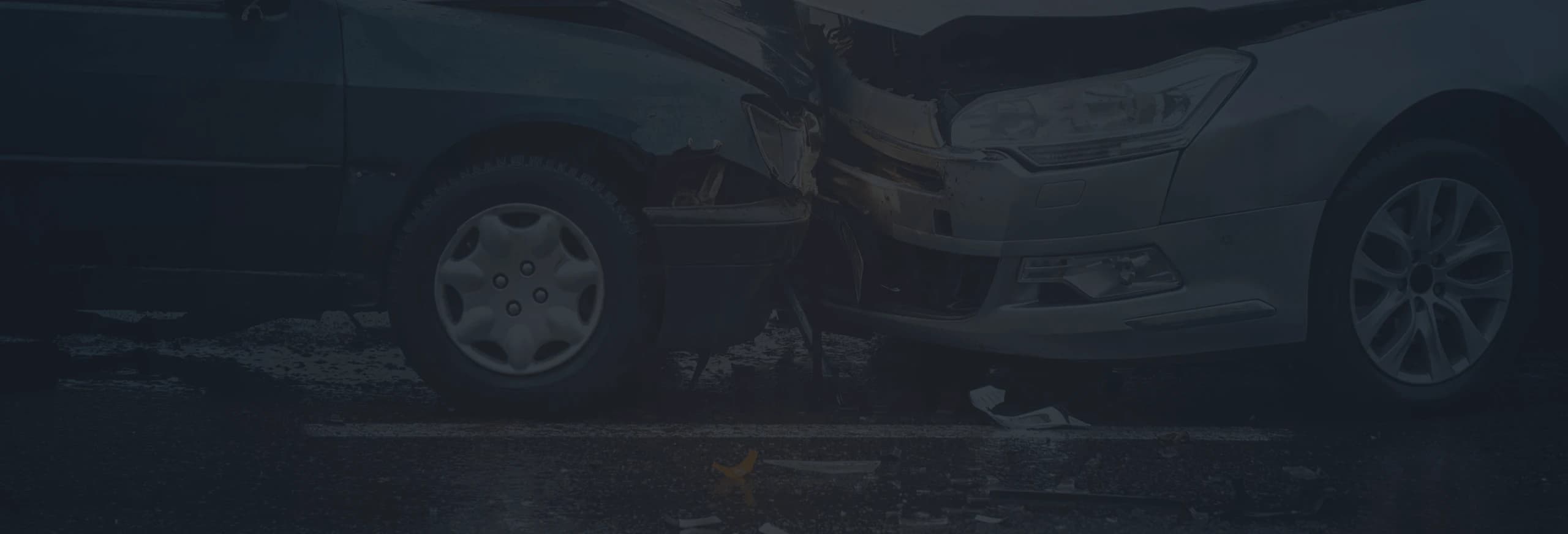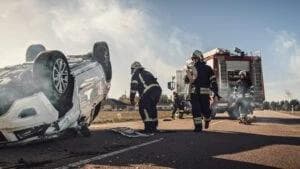
Catastrophic Accident Lawyer in Tucson

When a routine drive on I‑10 turns into a helicopter flight to Banner‑University Medical Center, or a normal shift at an aerospace plant ends with flash burns and months of skin‑graft surgery, you have entered catastrophic‑injury territory. These are the cases that change everything: spinal‑cord damage that ends a career in its prime, traumatic brain injuries that upend personalities and memory, multiple long‑bone fractures requiring pins, plates, and years of therapy. Arizona’s most recent crash data show more than 4,200 collisions classified as “serious‑injury” in a single year, and industrial incidents add dozens more. Each number represents a family that must suddenly master medical jargon, insurance fine print, and budget math that stretches decades into the future.
Why catastrophic claims carry far‑reaching consequences
Ordinary personal‑injury settlements aim to pay today’s doctor bills, car repairs, and a few weeks of lost wages. Catastrophic injuries demand a completely different scale. The National Spinal Cord Injury Statistical Center pegs lifetime care for a young adult living with quadriplegia at more than five million dollars. That figure covers only direct medical costs—wheelchairs that need replacing every few years, pressure‑relief mattresses, and attendant care when family members must return to work. It says nothing about structural home changes, such as widening every doorway for power‑chair clearance or installing ceiling lifts so caregivers can move a loved one without hurting their own backs. When a settlement overlooks those future costs, families end up fundraising on social media or draining retirement accounts just to keep essential services in place.
A Tucson catastrophic‑accident lawyer works with life‑care planners, neurosurgeons, and vocational economists to translate each surgery, therapy session, and career setback into a clear monetary number. Armed with those projections, the attorney walks into negotiations with a blueprint that shows adjusters how underpaying now simply postpones the inevitable—and invites litigation later.
For a free legal consultation with a Personal Injury lawyer serving Tucson, call (844) 343-9609
Where these life‑changing events happen around Tucson
Interstate corridors like I‑10 and I‑19 see a steady mix of long‑haul trucks, winter visitors unfamiliar with local merges, and sudden dust storms that erase visibility. Downtown and University of Arizona construction sites elevate workers onto scaffolds that tower above sidewalks, while heavy equipment rolls through cramped corridors. In summer, monsoon downpours can wash away dirt shoulders and send vehicles hydroplaning into the Rillito’s usually dry riverbed. Meanwhile, high‑temperature furnaces at aerospace and mining facilities push flames and molten metal to the brink of containment every shift. Each location carries unique defendants—fatigued truckers, subcontractors who skipped safety rails, or supervisors who overrode lock‑out procedures to shave minutes off a schedule. Pinpointing the scene of negligence helps the legal team name the correct parties before statutes of limitation begin to run.
Tucson Catastrophic Accident Lawyer Near Me (844) 343-9609
Gathering proof before it disappears
Within days of a severe crash or industrial accident, key evidence can vanish. Vehicle control modules are wiped during repairs; job‑site camera loops record over yesterday’s footage; witness memories fade amid new projects. A catastrophic‑injury attorney therefore serves immediate preservation letters to trucking companies, construction managers, or city agencies in charge of traffic signals. Those notices freeze electronic data and physical debris until engineers can extract speed, brake pressure, or temperature‑sensor information. The same urgency applies inside the hospital. Photographs of surgical hardware, early imaging scans, and even the ruined boots worn during an electrical arc can later explain why a leg could not be saved or how voltage entered the body. Without those early snapshots, insurers may claim the injury was less severe or blame a pre‑existing condition.
Click to contact our personal injury lawyers today
From intensive care to daily living
After discharge from trauma surgery, most survivors transfer to inpatient rehabilitation—often far from Tucson if local beds are full. Weeks later, they face decisions about adaptive vans, speech‑therapy software, and whether to remodel a bathroom or move to a single‑story home. At the same time, household income shrinks: partners step back from work to handle medication schedules, school runs, and insurance calls. That lost earnings stream must be part of any settlement or verdict. The Brain Injury Alliance of Arizona and the Arizona Spinal Cord Injury Association both track grant programs and peer‑support opportunities, yet even generous charity dollars rarely meet the full expense list. Negotiated funds—structured into a special‑needs trust so Medicaid or SSI benefits remain intact—fill the gap.
Complete a Free Case Evaluation form now
First actions families can take
- Seek the best possible care, even if it means transfer. Level‑1 trauma and specialty‑burn units improve long‑term outcomes.
- Keep a detailed log. Write down doctor explanations, therapy milestones, and new symptoms; these notes anchor medical causation months later.
- Save everything related to the incident. From broken safety harnesses to crumpled motorcycle helmets, physical artifacts tell a story no spreadsheet can match.
- Limit social‑media updates. Photos of forced smiles during rehab may be misread as proof of full recovery.
- Talk to counsel quickly. City, county, and state agencies require written notice within 180 days—miss it, and the right to sue evaporates.
How experienced counsel changes the arc of recovery
A Tucson lawyer who focuses on catastrophic harm does more than file paperwork. The attorney coordinates expert evaluations, arranges testimony from architects versed in Americans with Disabilities Act home modifications, and models future wage loss for both the injured person and any family caregiver. During talks with insurers, those calculations appear in black‑and‑white: how many replacement wheelchairs will be needed over fifty years, what each attendant‑care shift costs at today’s rates, and how rising inflation affects medication budgets. Carriers realize that lowball offers now will only expand damages later, especially if a jury sees day‑in‑the‑life videos of wound care or spasticity episodes.
If settlement talks fail, the legal team is already trial‑ready. Court exhibits may include 3‑D animations of spinal‑cord anatomy or virtual reconstructions of crane collapses, giving jurors a clear sense of the negligence that changed a life forever.
External resources that can help right now
Families often need answers long before claims conclude. The Arizona Spinal Cord Injury Association offers peer mentors and equipment‑loan programs, while the Brain Injury Alliance of Arizona hosts support groups and caregiver workshops. Workplace‑related cases benefit from reviewing public investigation files through ADOSH. For broader medical statistics that strengthen settlement talks, the National Spinal Cord Injury Statistical Center and American Burn Association provide credible cost and prognosis data you can share with your attorney.
Frequently Asked Questions
How soon should we contact a lawyer after a catastrophic accident?
The sooner you reach out the better. Critical evidence—event‑data recorders, security‑camera files, skid marks—can be lost within days. Early legal notice is also required if any city, county, or state agency may share fault; in Arizona that deadline can be as short as 180 days.
Can we still recover compensation if our loved one shares some blame?
Yes. Arizona follows a comparative‑fault system. Any monetary award is reduced by the injured person’s percentage of responsibility, but recovery is not barred unless they are 100 percent at fault. Careful investigation often keeps that percentage lower than insurers first suggest.
Will a large settlement jeopardize Medicaid or SSI benefits?
Not when funds are placed in a properly drafted Special Needs Trust or structured‑settlement annuity. An attorney and financial planner work together to ensure money is available for lifelong care without disqualifying survivors from essential public programs.
Catastrophic injuries rewrite every plan—careers, vacations, even simple walks on The Loop. When negligence sparks that upheaval, you do not have to face trillion‑dollar insurers or corporate risk teams alone. A Tucson catastrophic‑accident lawyer can transform raw medical facts into persuasive financial demands, defend them in court if necessary, and help secure the resources that turn day‑to‑day survival into long‑term resilience. One conversation today can lock in the evidence you need—and start protecting the future you still deserve.
For a free consultation, call (844) 343-9609
Get an agent on the line in seconds
Responsive
Legal Assistance
Our personal injury attorneys advocate for the funds necessary to cover bills, secure medical treatment, recoup lost wages, and provide compensation for your pain and suffering.
Are you facing unfair treatment from the insurance company?
Do you know the value of your case?
Is the insurance company asserting that the accident is your responsibility?

We'll get back to you ASAP.
Get Your Free Consultation
You Pay Nothing Unless We Recover Compensation For You
